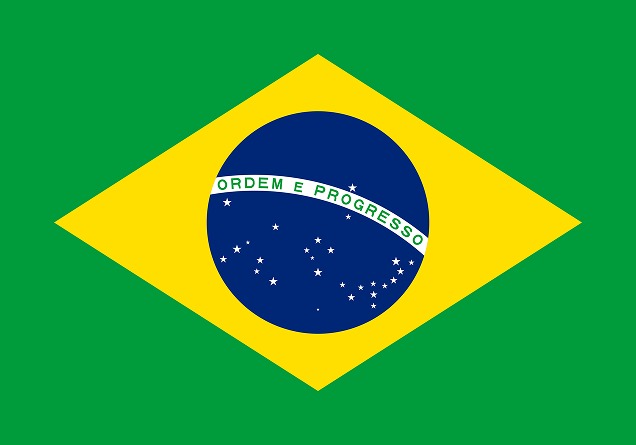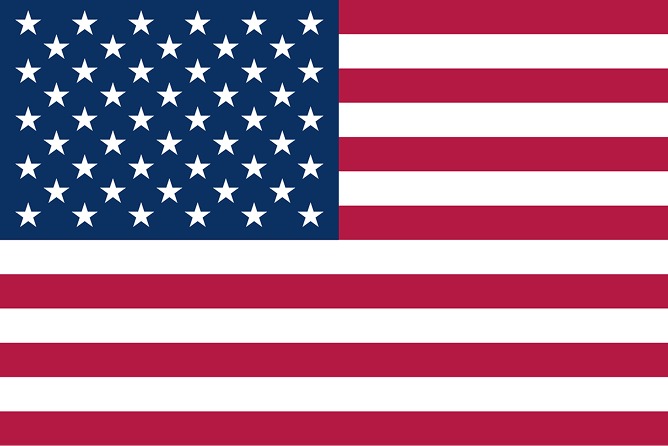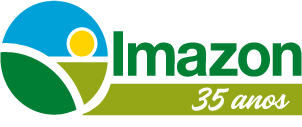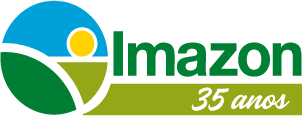No podemos encontrar internet
Intentando reconectar
¡Algo salió mal!
Espera mientras volvemos a la normalidad
Cattle Ranching

For over 30 years, Imazon has invested in scientific research, field projects, and collaboration with both public and private sectors to offer the best solutions for developing cattle ranching in the Amazon without deforestation.
Through the Amazon Monitoring Program, Imazon works with the MapBiomas network to use satellite imagery to show the advance of pastures over the forest, producing essential data for public and private sectors to combat illegal deforestation related to cattle ranching in the region. Additionally, on the MapBiomas network platform, it is possible to monitor the degree of pasture degradation.
Within the Policy and Socioeconomics Program, the institute has an exclusive research area to evaluate cattle ranching in the Legal Amazon, studying the main problems related to the activity in the region and proposing the best solutions to make it sustainable. Furthermore, Imazon participates in working groups that discuss improvements in Amazonian cattle ranching, such as the Technical Monitoring Chamber of the Beef Conduct Adjustment Agreement (TAC da Carne) of the Federal Public Ministry in Pará (MPF/PA), and in events focused on the sector, such as Expomeat. The institute was also one of those responsible for creating Radar Verde, an indicator of transparency in the Amazonian beef supply chain.
Imazon also conducts research that aids in the topic of cattle ranching within the Law and Sustainability Program, where it specifically discusses combating land grabbing related to the activity in the region.
In the field, the institute also works with local governments and ranchers through the Landscape Restoration Program, which supports the adoption of sustainable production and compliance with environmental laws. Specifically in the municipality of Paragominas, Pará, Imazon also conducted a field study on the increase in productivity and profitability of green cattle ranching.
Within the Protected Areas Program, the institute trains Community Environmental Agents (ACC) to report illegal activities in conservation units, Indigenous lands, and quilombola territories, including cattle ranching. Currently, there are more than 100 volunteers working to defend these territories with Imazon’s support.
Below, learn more about our work related to cattle ranching in the following topics:
1. Scientific research
1.1. Satellite monitoring
1.1.1. Cattle ranching expansion
1.1.2. Pasture degradation
1.2. Solutions for cattle ranching
1.2.1. Increased productivity
1.2.2. Pasture reform
1.2.3. End of deforestation incentives
2. Field projects
2.1. Support for ranchers
2.2. Evaluation of Green Cattle Ranching
2.3. Monitoring protected areas
3. Engagement with public and private sectors
3.1. Radar Verde
3.2. Beef TAC
3.3. Events
3.3. Communication materials
1. Scientific research
1.1. Satellite monitoring
1.1.1. Cattle ranching expansion
According to the latest data from the MapBiomas network, whose technical coordination for the Amazon biome is carried out by Imazon’s Monitoring Program, 86% of deforested areas in the Legal Amazon were occupied by pastures in 2021. In the network’s historical series, the area designated for cattle ranching tripled in 37 years, increasing from 19 million hectares in 1985 to 68 million hectares in 2021. As a result, pastures already occupied 13% of the Legal Amazon’s territory, equivalent to almost three times the size of São Paulo state.

And most of the deforestation in the region is illegal. A study that cross-referenced satellite images of forest clearing with environmental agency authorizations in the Amazon and Matopiba from 2008 to the second half of 2020 concluded that 94% of vegetation removal was done without permission.
1.1.2. Pasture degradation
In addition to being mostly illegal, the expansion of cattle ranching into the Amazon rainforest has occurred without the already deforested areas being well utilized. In 2021, 57% of existing pastures in the Legal Amazon suffered from severe or moderate degradation, according to MapBiomas data. This corresponds to 39 million hectares, an area larger than the state of Mato Grosso do Sul.

1.2. Solutions for cattle ranching
1.2.1. Increasing productivity
Cattle ranching in the Amazon is still highly unproductive. According to an Imazon study within the Amazônia 2030 project, there is an average of one ox per hectare in the region, when there could be at least 3. And, according to the same research, both technologies and rural credit are already available to increase this productivity without new deforestation.
The problem is that, although producers who operate with sustainable cattle ranching can achieve productivity up to six times higher than the national average, factors such as the prevalence of degraded pastures, the abundance of land, and especially the existence of incentives for illegality contribute to a scenario of continued deforestation. In other words: despite good examples, what still predominates in the Amazon is an extensive cattle ranching model, which prefers to abandon pastures to deforest new areas of forest.
1.2.2. Pasture reform
Although the cost to deforest one hectare (around R$ 1,500) is less than the cost to reform the same area of pasture (between R$ 1,600 and R$ 3,000), the gain in productivity obtained with pasture recovery makes the second option cheaper for ranchers. This is the conclusion of an Imazon study for the Amazônia 2030 project, which showed that it would be necessary to deforest 3.75 hectares of forest to produce the same as one hectare of reformed pasture, considering an average productivity gain of 80 kg to 300 kg of meat per hectare with pasture reform.
In this case, to meet the meat demand projected by the Ministry of Agriculture and Livestock (Mapa) for 2030, which would require a production increase of between 1.4% and 2.4%, it would be cheaper to invest in pasture recovery than in deforestation. This is because, without productivity gains, it would be necessary to deforest 634,000 to 1 million hectares per year until 2030, which would cost R$ 950 million to R$ 1.63 billion annually. However, with pasture reform and an average increase in productivity, it would be necessary to recover between 170,000 and 290,000 hectares of pastures per year until 2030, which would cost R$ 270 million to R$ 873 million annually. In other words, deforestation would be three to seven times more expensive than pasture reform.

1.2.3. Ending incentives for deforestation
Currently, according to Imazon’s research, the main solutions to make cattle ranching sustainable in the Amazon include: combating land grabbing; effectively tracing and inspecting cattle; offering incentives for recovering degraded pastures and increasing productivity; properly collecting taxes (large and less productive properties should pay more, but governments have failed to enforce collection, as shown in a study by the institute); ensuring broad access to ongoing technical assistance; linking rural credit to sustainable productivity increases; and investing in infrastructure in priority areas.
2. Field projects
2.1. Support for cattle ranchers
As part of the Landscape Restoration Program, through the Forest Forever project, Imazon has supported families working with agriculture and cattle ranching in adopting sustainable production practices and complying with environmental laws. This project helps small and medium rural landholders implement the Environmental Regularization Program (PRA) and the Project for the Recovery of Degraded or Altered Areas (PRADA), which involves restoring deforested Permanent Preservation Areas (APPs) and Legal Reserves (RLs).
For family farmers living in settlements, the project supports the restoration of an area equivalent to 400 soccer fields in the municipalities of Capitão Poço, Dom Eliseu, Paragominas, and Ulianópolis, in Pará. To achieve this, Imazon has already trained settled families in forest restoration and planted over 13,500 native tree seedlings on their small properties. Eight species have been selected to generate income for these families in the short, medium, and long term: açaí, pupunha, cacao, cupuaçu, ingá, buriti, Brazil nut, and andiroba.
For medium-scale rural producers, the project supports the implementation of Assisted Natural Regeneration (RNA) over an area equivalent to 3,000 soccer fields. This technique involves actions to speed up natural forest recovery, such as building fences to keep cattle out of regenerating areas, installing firebreaks, controlling pests, and removing invasive species.
2.2. Assessment of green cattle ranching
To evaluate the results of investing in green cattle ranching in the Amazon, Imazon conducted a case study in the municipality of Paragominas, Pará. The study measured financial performance and worker satisfaction on five farms that adopted a sustainable production model, comparing the results with those of traditional properties.
The conclusion was that green farms were able to increase productivity by around four times compared to conventional ones, making them more profitable. Additionally, sustainable farms showed higher levels of employee satisfaction regarding working conditions. These practical results help demonstrate the benefits of adopting green cattle ranching in the Amazon.
2.3. Monitoring protected areas
As part of the Protected Areas Program, the institute trains Community Environmental Agents (ACC) to report illegal activities in conservation units, Indigenous lands, and quilombola territories, including cattle ranching. Currently, there are more than 100 volunteers defending these territories with support from Imazon in northern Pará, home to the world’s largest block of protected areas. More than 22 million hectares are under intense pressure from deforestation caused by land grabbing, agriculture, and mining.
3. Engagement with public and private sectors
3.1. Radar Verde
In 2021, Imazon created Radar Verde (Green Radar) in partnership with the Instituto O Mundo Que Queremos. This transparency index tracks the beef supply chain in the Amazon. Through this initiative, we questioned 90 slaughterhouses and 69 supermarket chains about the concrete actions they are taking to prevent meat linked to illegal deforestation and other crimes, such as forced labor, from entering their supply chains. The responses were evaluated and published in 2022. However, none of the companies agreed to disclose their individual results.
Despite this, Radar Verde has helped raise public awareness about the importance of demanding transparency in the cattle supply chain. According to a survey conducted by Reclame Aqui for the initiative, with over 9,000 respondents from across Brazil, 73% said they would stop buying meat from companies that cannot guarantee their production is free from illegal deforestation, if traceability became mandatory. Additionally, 79% believe that supermarkets and slaughterhouses should be responsible for verifying the legality of meat sourcing.
In 2023, Radar Verde began its second evaluation cycle, aiming to gather information from even more companies and improve transparency in the publication of results. This cycle has already mapped 173 slaughterhouses, nearly double the previous year’s total.
3.2. TAC da Carne
Imazon was one of the institutions that supported the Federal Public Ministry (MPF) in drafting the cattle ranching Terms of Conduct Adjustment (TAC) agreement in Pará, known as the “TAC da Carne” (Meat TAC). This initiative requires signatory companies to prevent the commercialization of beef linked to illegal deforestation in the state. Created in 2009, the TAC da Carne was crucial in significantly increasing the number of Environmental Rural Registry (CAR) entries, from just 400 in its first year to over 170,000 by 2016.
Currently, the institute also participates in the Technical Monitoring Committee for the TAC da Carne led by the Federal Public Ministry in Pará (MPF/PA), where it helps evaluate the results of government inspections. In its latest audits, MPF/PA found that nearly 10% of the cattle purchased by the slaughterhouses inspected came from illegally deforested areas.
3.3. Events
To expand the reach of the proposed solutions for deforestation-free cattle ranching, Imazon also organizes and participates in events on the topic. For example, to present Radar Verde, the institute participated in the latest COP, held in Egypt, and at Expomeat, one of the country’s most important meat industry trade shows.
Imazon also recently hosted the debate series “Para onde vai a boiada” on its YouTube channel. The webinars brought together researchers, ranchers, a business owner, and a journalist to discuss the future of cattle ranching in the Amazon.
 PT
PT
 ES
ES
 EN
EN

